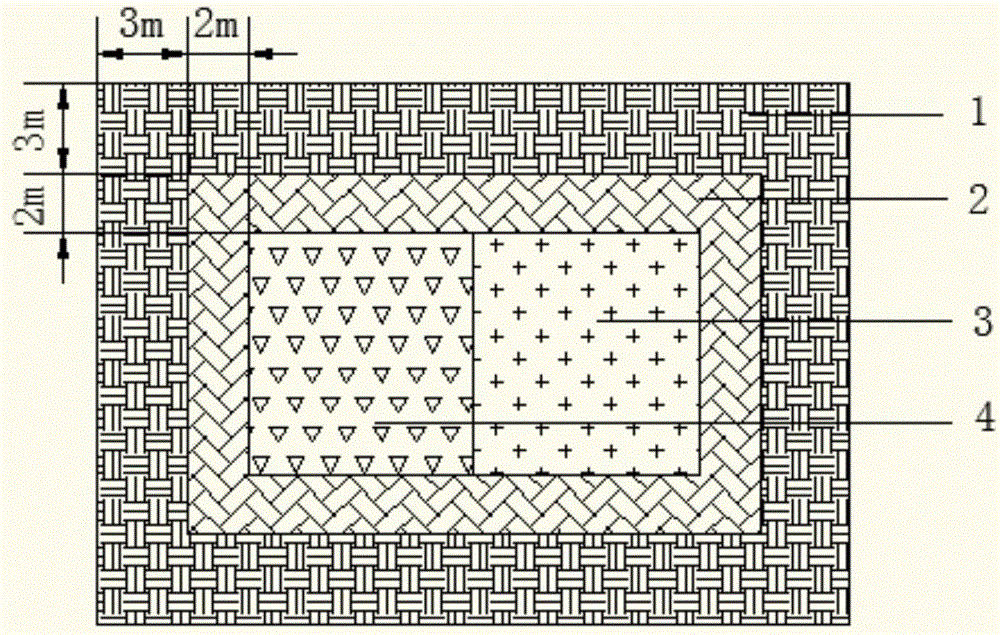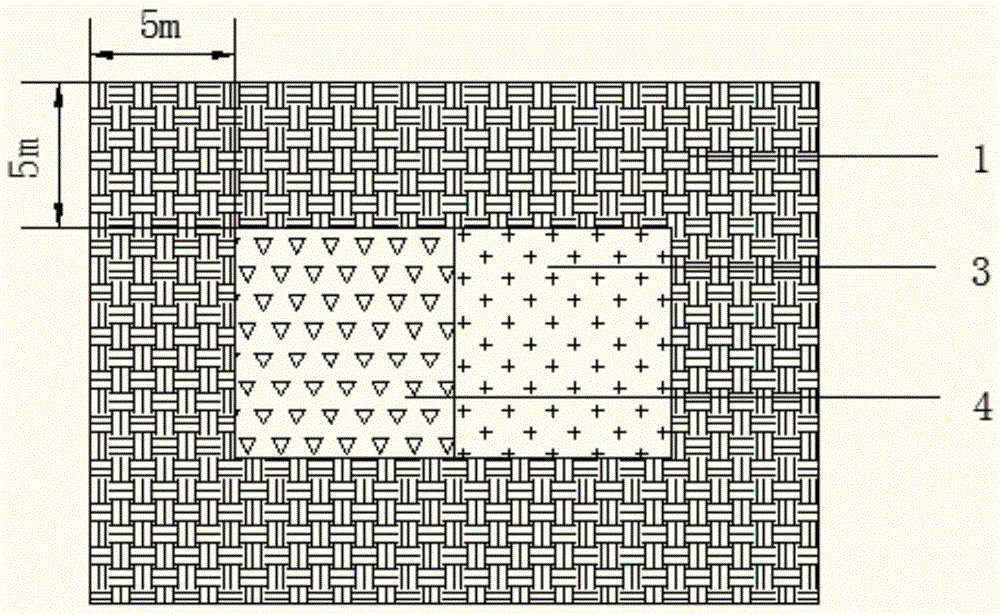Grazing-resistant bio-environment creation method for submerged plant planting and propagation
A technology for submerged plants and habitats, applied in botany equipment and methods, plant cultivation, horticulture, etc., can solve problems such as extinction and submerged plants decline, and achieve the effects of reducing project cost, easy operation, and low energy consumption
- Summary
- Abstract
- Description
- Claims
- Application Information
AI Technical Summary
Problems solved by technology
Method used
Image
Examples
Embodiment 1
[0028] A method for creating a grazing-resistant habitat for submerged plants to colonize and reproduce, the steps of which are:
[0029] (1) Select the planting area: the average water depth of Maojiabu, West Lake, Hangzhou is about 1.5m. In the area close to the shore, the water depth is measured by the water depth meter, and the water depth of 0.8m or 1m or 1.2m is selected in the 25m×18m water area, respectively. Insert bamboo poles to mark the four corners of the rectangular area, fix the bamboo poles, and connect the four bamboo poles in turn with nylon ropes along the water surface to mark the selected submerged plant planting area.
[0030] (2) Plant peripheral fence plants: choose a combination of two submerged plants: hornwort and chrysoprina spicosa for the peripheral fence layer plants, and use bamboo poles and nylon ropes to mark the planting areas of hornwort and chrysoprina spicosa respectively , according to 80 plants / m 2 Density, respectively plant the hornwo...
Embodiment 2
[0035] A method for creating a grazing-resistant habitat for submerged plants to colonize and reproduce, the steps of which are:
[0036] (1) Select the planting area: In the same water area as in Example 1, use the same method to select another 25m×18m area similar to Example 1, and mark it with bamboo poles and nylon ropes.
[0037] (2) Planting peripheral fence plants: Select a single species of hornwort algae for the submerged plants of the outer fence, use bamboo poles and nylon ropes to mark the planting area of hornwort algae, and use 80 plants / m 2 Density, planting hornwort algae in good growth condition in the corresponding planting area, the planting layer width of hornwort algae is 5m, and the area is 330m 2 .
[0038] (3) Planting protected plants in the inner perimeter: Choose bitter grass and Hydra verticillium for the protected submerged plants in the inner perimeter, mark them with bamboo poles and nylon ropes, divide the inner perimeter protection area into...
Embodiment 3
[0042] A method for creating a grazing-resistant habitat for submerged plants to colonize and reproduce, the steps of which are:
[0043] In the same water area as in Embodiment 1, another area of 25m×18m similar to Embodiment 2 is selected. Replace the Chrysostrum pentaphyllum in Example 2 with Villium spicanus in good growth condition, and the other implementation steps are the same as in Example 1 or 2.
[0044] After about 35 days, the submerged plants in the grazing-resistant area reached stability, and the grazing-tolerant habitats were successfully colonized with bitter grass and Hydrilla verticillium, and the coverage of bitter grass reached 55%, and the coverage of Hydrilic algae reached 45%. maintained at a high level.
[0045] In May 2014, three technical examples of grazing-resistant habitat construction were completed, and they were monitored regularly. After about 35 days, the submerged plants in the grazing-tolerant area reached stability, and the grazing-res...
PUM
| Property | Measurement | Unit |
|---|---|---|
| Area | aaaaa | aaaaa |
Abstract
Description
Claims
Application Information
 Login to View More
Login to View More - R&D
- Intellectual Property
- Life Sciences
- Materials
- Tech Scout
- Unparalleled Data Quality
- Higher Quality Content
- 60% Fewer Hallucinations
Browse by: Latest US Patents, China's latest patents, Technical Efficacy Thesaurus, Application Domain, Technology Topic, Popular Technical Reports.
© 2025 PatSnap. All rights reserved.Legal|Privacy policy|Modern Slavery Act Transparency Statement|Sitemap|About US| Contact US: help@patsnap.com



